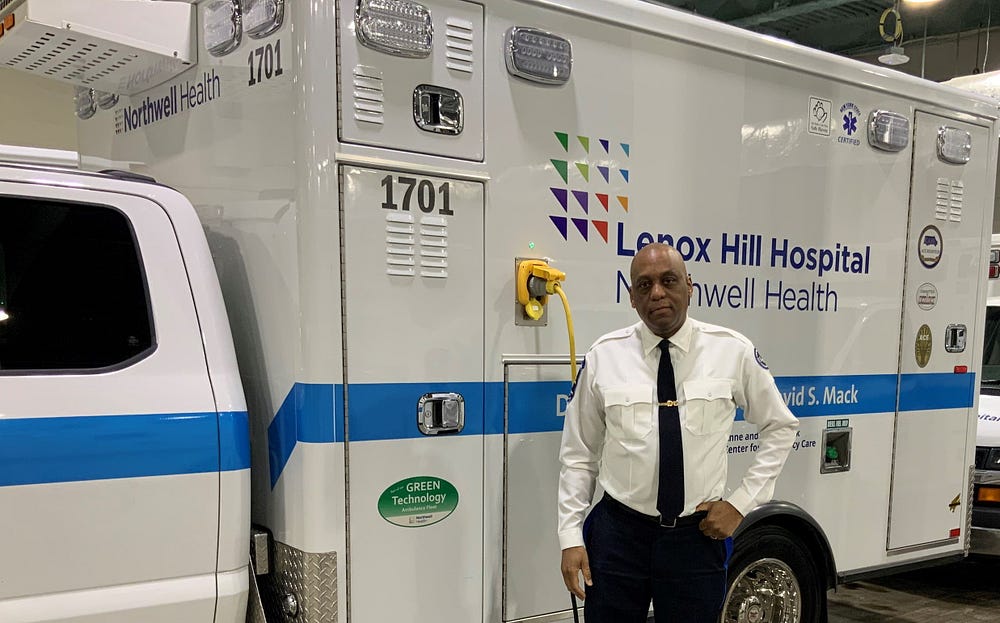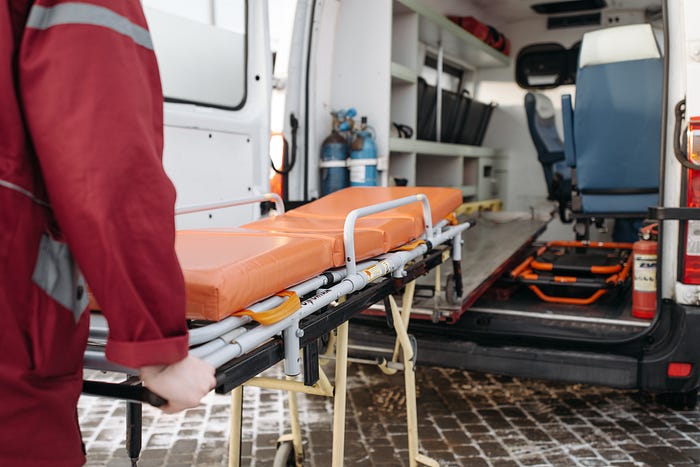Ambulances that don’t idle offer savings and less emissions

After concerned New Yorkers lodged thousands of complaints about the toxic fumes belched out by ambulances idling on the city’s street corners, paramedics at Northwell Health set their sights on making their emergency response vehicles more sustainable.
Their biggest challenge: How to slash the emissions that threaten community health while ensuring the high-tech life-support systems remain operational and vital drugs are stored onboard at correct temperatures.
After first developing ambulances that used solar panels and compressed natural gas, the Northwell team of drivers and EMTs opted instead for a hybrid diesel-electric system that uses ZeroRPM idle reduction technology. This technology gives you power, heat, and air conditioning without running the vehicle’s engine.
Now Northwell has 30 sustainable ambulances in its 100-strong fleet and the trend it started is on the rise. New York City Fire Department has replaced its ambulances with more sustainable alternatives and other cities are starting to follow suit.
“The impact on the environment has been nothing but positive,” says Bernard Robinson, a former paramedic who is now Northwell Health’s operations director. “Every time we replace a vehicle, it’s replaced with a green vehicle. We’ll definitely be 100% green in the next three years.”
In addition to reducing emissions, the hybrid technology helps reduce Northwell’s fuel bills, cuts wear and tear, and limits maintenance on the vehicles which paramedics can plug in at points around New York to top-up onboard batteries.
Playing the long game
As they wait on the street to rapidly respond to emergency calls, paramedics using regular ambulances have to keep noisy engines ticking over to ensure onboard equipment is ready to use at a moment’s notice.
On Northwell’s hybrid vehicles, however, the diesel engines shut down if they are stationary for more than five seconds, explains Robinson.
The vehicle then seamlessly switches to onboard stealth power battery units that keep the ambulance and its equipment fully operational. The system also keeps temperatures stable during the city’s sweltering summers and freezing winters.

The hybrid ambulances cost $259,000, around $15,000 more than the standard vehicles used in Northwell’s fleet which carries over 110,000 New York patients each year.
Despite higher upfront costs, more sustainable technology offers myriad savings down the line, explained Paul Power, Northwell’s operations manager.
“Back when diesel fuel was $5, $6 a gallon and we were spending well over $1 million a year just on fuel, it was an opportunity to really decrease our fuel consumption and our carbon emissions,” says Power, who also works as a Northwell paramedic.
Mobile billboard

Estimating that each hour spent idling is the equivalent of driving 30 miles (48 kilometers), he says using the hybrid technology dramatically reduces damage to the emergency response vehicles.
That in turn helps cut costly vehicle maintenance bills and can help extend the lifespan of a New York ambulance by a year to five years, he explains.
“It has a lot of downstream impact,” says Power. “For our ambulances in Manhattan, we may only have 10,000 miles [on the clock] but they would have probably close to a million miles engine hours.”
GPS tracking apps, like Silent Passenger, are also helping improve ambulance efficiency by monitoring how long a vehicle has been stationary and tracking the routes crews follow around New York City.
At Northwell’s Manhattan facilities — including Lenox Hill Hospital and Lenox Health Greenwich Village — specialized rapid charging points have been installed to allow paramedics to plug in the sustainable ambulances and replenish their onboard batteries.
More charging stations are expected to be rolled out around New York City, which wants all of its municipal ambulances to be fully electric and carbon neutral by 2040.
As patients increasingly look for health care providers to ramp up their environmental initiatives, sustainable ambulances can help publicize the steps organizations are taking, says Power.
“These ambulances are rolling billboards for your health care facility,” he says, adding reduced engine vibrations and exhaust fumes make the new vehicles much more comfortable both for patients and paramedics. “People who are really environmentally friendly in their personal lives are going to seek health care organizations that have the same values as them.”

Learn more about resilience in health care.
